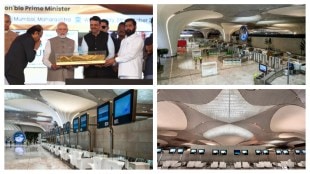By Krishnan Nilakantan (NK)
AI won’t replace your job. But someone who knows how to use AI will. This isn’t a futuristic warning; it’s happening right now. AI is embedded in workflows, redefining roles, and transforming value chains. Every major sector is feeling the tremors: predictive analytics, AI-powered diagnostics in healthcare, autonomous financial forecasting, and intelligent code generation in IT. Yet, across Indian enterprises, there’s a strange calm.
People talk about AI. But true readiness is rare. While awareness is high, readiness is not just low, it’s dangerously absent. Most organisations remain in passive awareness, assuming change will arrive slowly or affect someone else first. L&D programmes are still wired for yesterday’s skills. CXOs champion AI in boardrooms, then hesitate to invest in the people who drive it.
AI adoption isn’t a “pilot project” problem. It’s a people transformation challenge. In an era of exponential acceleration, even small delays have massive consequences.
AI is redefining how work flows across every level demanding new tools, and new thinking. Yet, too many roles remain untouched by this. Job descriptions and KPIs are still rooted in models that reward stability over adaptability. As a result, employees are left navigating a world built for tomorrow with yesterday’s maps.
The real question we must ask: what unique and irreplaceable value humans should create in an AI-augmented world. Answering this requires a fundamental rethink of how we hire, train, promote, and measure performance in the age of intelligent systems.
CXOs must lead from the front, treating AI-readiness as a business-critical priority, not a side project. This means allocating a budget and time for skilling while also setting the tone by upskilling themselves.
HR must redraw the blueprint, refreshing role architectures, skill taxonomies, enabling mobility into future-centric roles. Curiosity and applied AI usage should be recognised and rewarded. L&D must evolve from curating content to orchestrating capabilities. Every programme whether induction, leadership, and functional, must begin with one question: “How is AI changing this role?”. Success should be measured by courses completed, but by behaviors changed and business value delivered.
To support this shift, I propose a four-stage AI Readiness Maturity Model, starting with Awareness (AI talk, no action), Experimentation (silos and pilots), Integration (embedded, but inconsistent), and Orchestration (culture-led, but stalling risks). This model framework helps organisations reflect, redirect and build sustained capability.
We must stop assuming that awareness equals readiness, or intent equals action. Either we prepare proactively, or restructure reactively under pressure, at scale, and often too late. The real risk is not being replaced by AI, but becoming irrelevant because we failed to adapt.
AI is here. The question is, are we ready?









